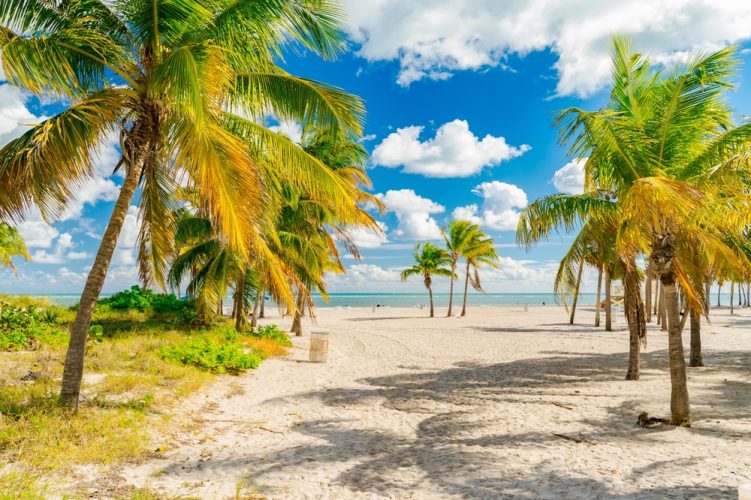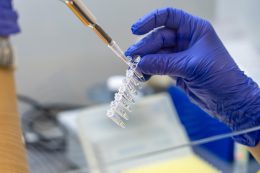Summer vacation plans are turning into nightmares for Florida families.
The sunshine state’s coastal waters are harboring a deadly secret.
And Florida beaches got hit with one terrifying threat that tore apart four families.
Deadly bacteria claims four lives in Florida waters
Florida health officials confirmed that a flesh-eating bacteria has killed four people in the state this year alone.¹
The Florida Department of Health posted a chilling notice on their website revealing that 11 people have contracted Vibrio vulnificus bacteria in 2025.²
That means more than one-third of people who’ve gotten this infection have died from it.
The bacteria lurks in warm, brackish seawater along Florida’s coast, just waiting for unsuspecting swimmers with open wounds.
This specific bacterium typically lives in warm, brackish seawater and can enter open wounds when people are swimming.
But the ocean isn’t the only place this killer bacteria can strike.
Raw shellfish, especially oysters, can also harbor the deadly organism that’s turning beach trips into death traps.
The gruesome reality of flesh-eating disease
This isn’t your typical stomach bug from bad seafood.
This deadly bacteria triggers an illness called vibriosis that begins with vomiting, diarrhea, and stomach pain.
But things can get much worse, much faster.
Signs and symptoms of a Vibrio skin infection include “fever, redness, pain, swelling, warmth, discoloration and discharge,” according to the CDC.⁴
While healthy people typically experience only mild symptoms, anyone who’s immunocompromised or battling chronic liver disease faces serious health risks.
When Vibrio vulnificus enters the bloodstream, it becomes a race against time.
“If Vibrio vulnificus enters the bloodstream, it can cause severe illness marked by fever, chills, septic shock and blistering skin lesions,” Florida Health officials warned.⁵
Around half of these bloodstream infections prove deadly.
The most horrifying cases develop into necrotizing fasciitis – where “the flesh around an open wound dies,” the CDC warns.⁶
That’s why medical experts call Vibrio vulnificus a “flesh-eating bacteria.”
Swift action can mean the difference between life and death
Doctors diagnose this bacterial infection “by testing cultures obtained from stool, wounds or blood,” according to health officials.⁷
For mild infections, the CDC recommends increasing fluid intake to prevent dehydration.
Patients with serious or prolonged infections need antibiotics to boost their survival chances.
Certain patients require surgery to cut away dead tissue from infected wounds.
“Aggressive attention should be given to the wound site; for patients with wound infections, amputation of the infected limb is sometimes necessary,” Florida Health officials stated.⁸
The bacteria moves fast and shows no mercy.
“About one in five people will die from the infection, sometimes within a day or two of illness,” the CDC states.⁹
Simple precautions can save your life
Health officials are urging people to stay out of warm saltwater or brackish water if they have any fresh cuts, scrapes, or wounds.
That beach vacation isn’t worth losing your life over.
Officials also recommend people “not consume raw oysters and other raw shellfish, and to avoid cross-contamination of other foods with raw seafood or its juices.”¹⁰
“Protective gloves should be worn when handling raw shellfish,” officials added.
Those with “liver disease, cancer, diabetes, HIV or thalassemia” as well as people “taking immune-suppressing medications” are at higher risk and should take extra precautions, the CDC warns.¹¹
Florida’s flesh-eating bacteria problem is getting worse
The numbers from previous years show this isn’t just a fluke.
In 2024, Florida reported “a total of 82 cases of Vibrio vulnificus and 19 deaths.”¹²
Compare that to 2023’s “46 cases and 11 deaths.”
Things aren’t getting better – they’re getting worse, and real families are losing loved ones because of it.
Florida’s warm coastal waters create perfect conditions for this deadly bacteria to thrive.
Climate change and rising water temperatures could make the problem even worse in the coming years.
Beach-goers need to understand that this bacteria doesn’t discriminate.
It can turn a fun family vacation into a medical emergency faster than anyone expects.
The four families who lost loved ones this year learned that lesson the hard way.
No one should have to experience that kind of tragedy because they didn’t know about a simple cut or scrape.
Florida health officials are doing their job by warning the public, but it’s up to individuals to take the threat seriously.
One small mistake around infected water can cost everything.
¹ Florida Department of Health website notice, July 2025
² Ibid.
³ Centers for Disease Control and Prevention, Vibrio vulnificus information
⁴ Florida Department of Health, vibriosis symptoms
⁵ CDC website, Vibrio skin infection symptoms
⁶ Florida Health, bloodstream infection information
⁷ Florida health officials, diagnostic testing procedures
⁸ Florida Department of Health, wound treatment guidelines
⁹ CDC, Vibrio vulnificus mortality statistics
¹⁰ Health officials, prevention recommendations
¹¹ CDC, high-risk population warnings
¹² Florida Department of Health, 2024 case statistics
















